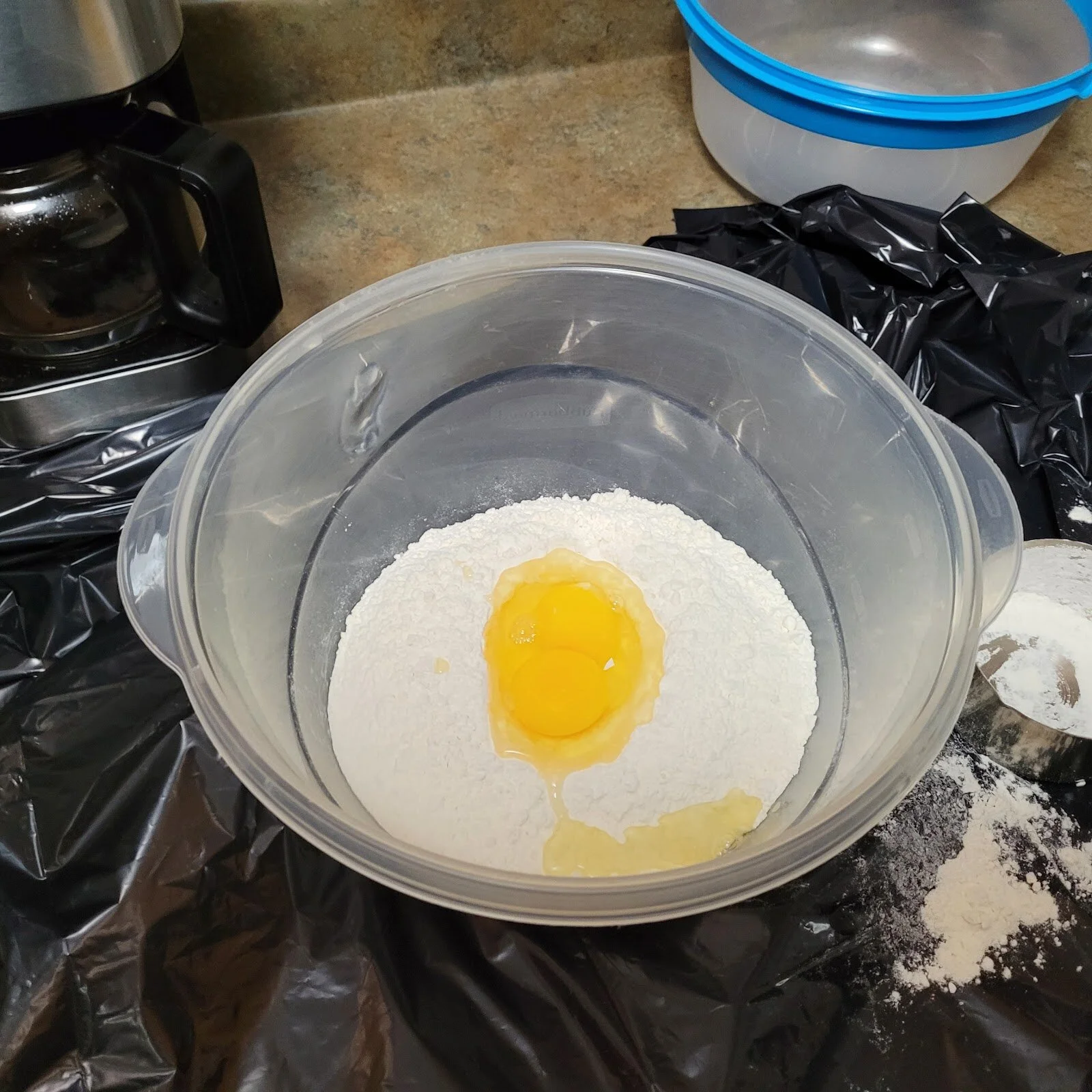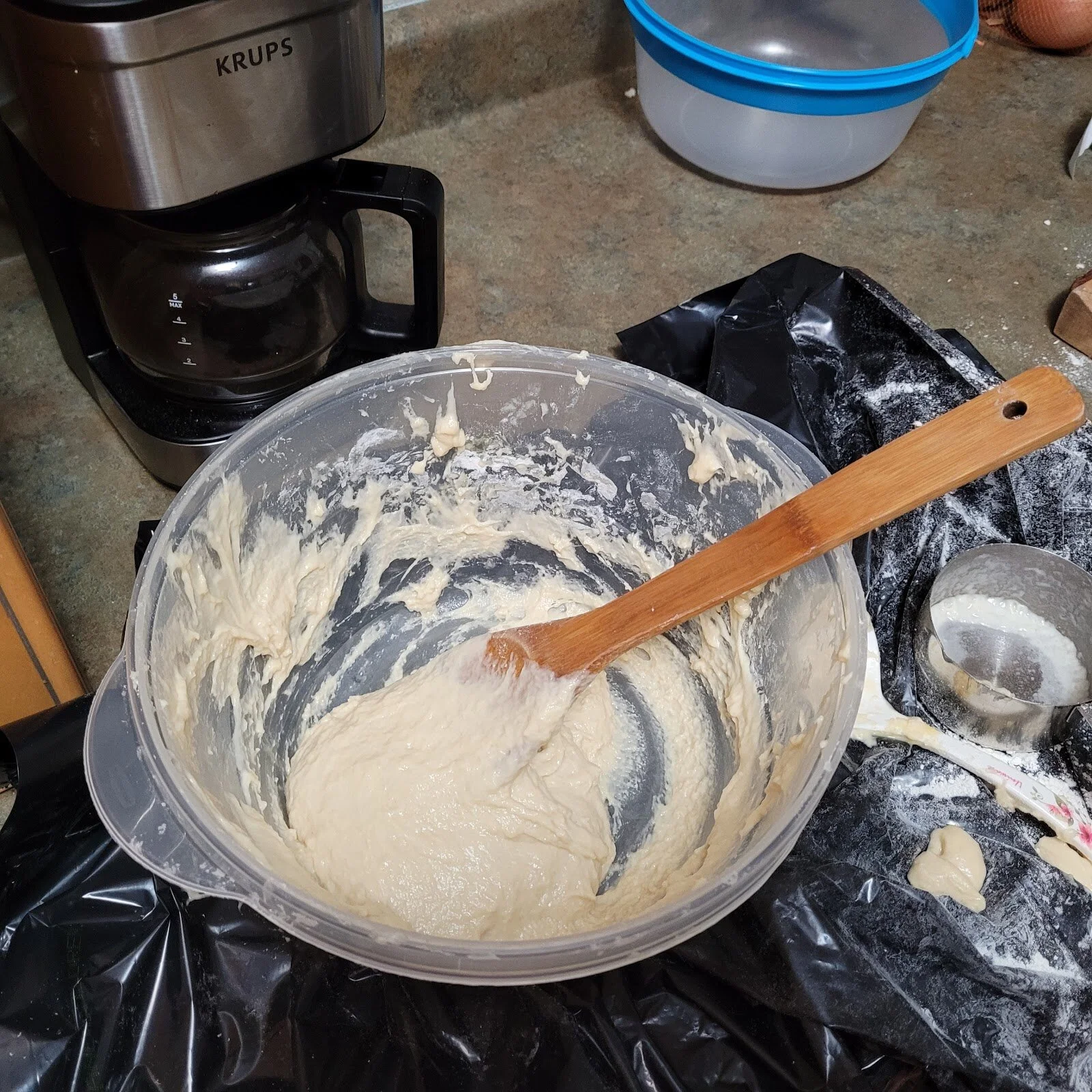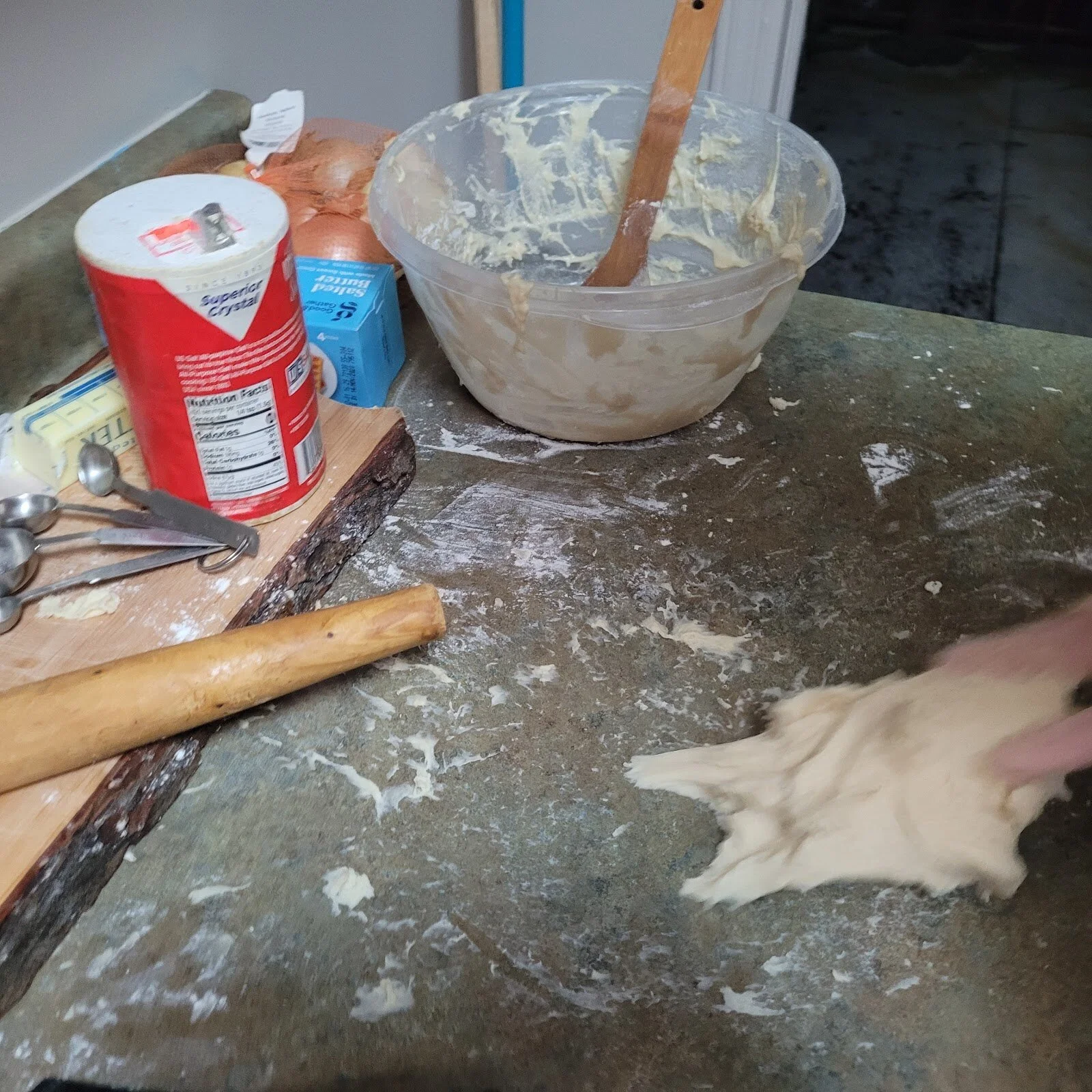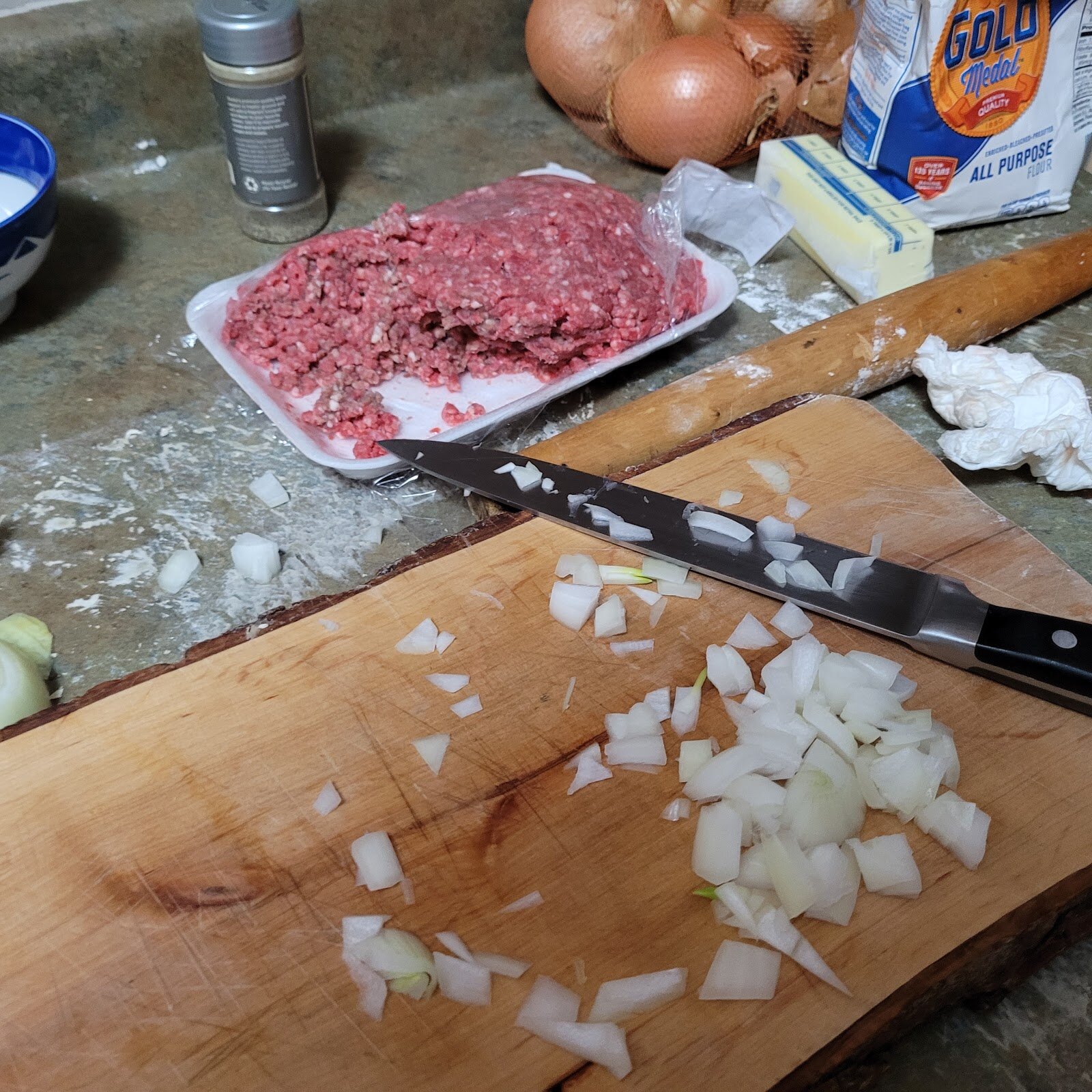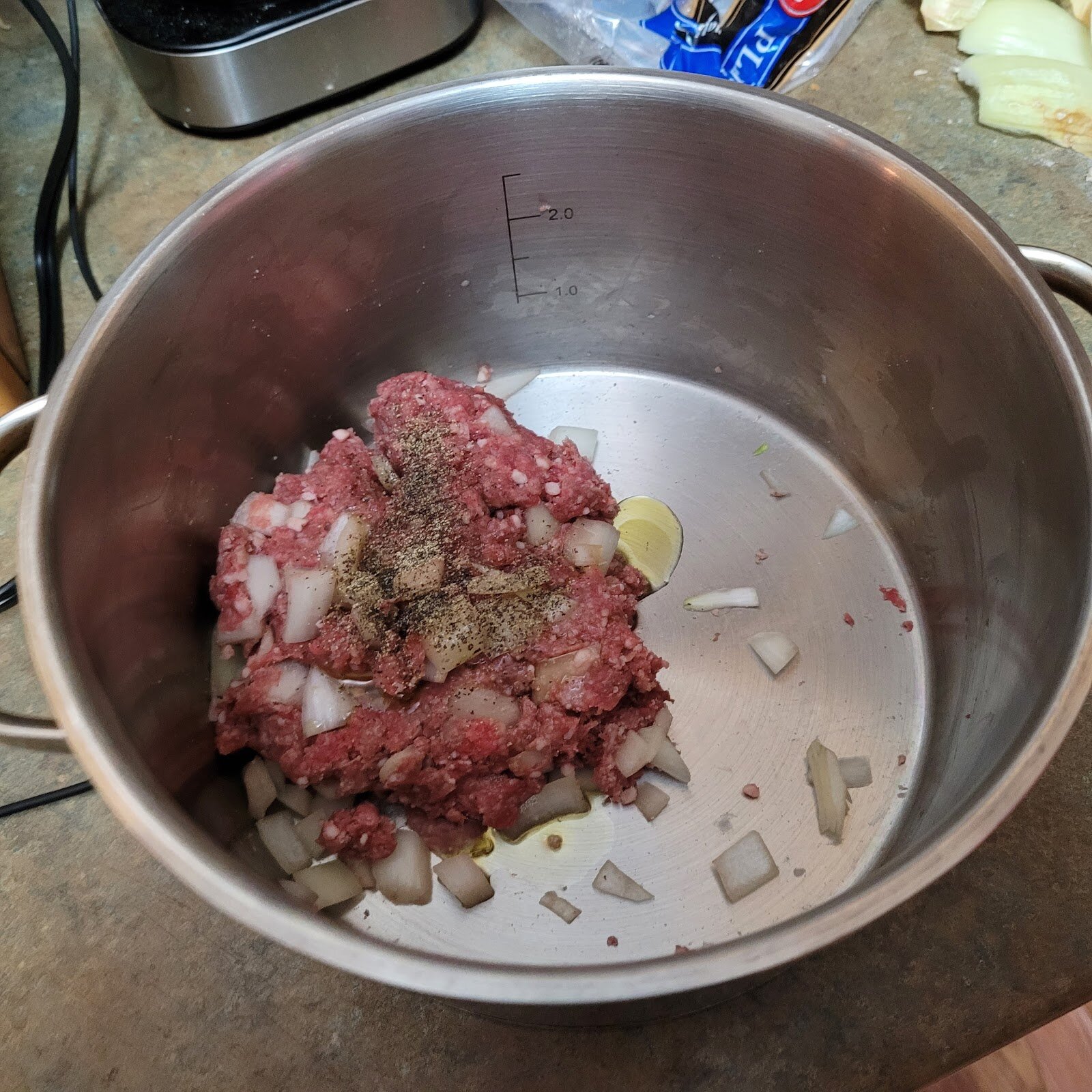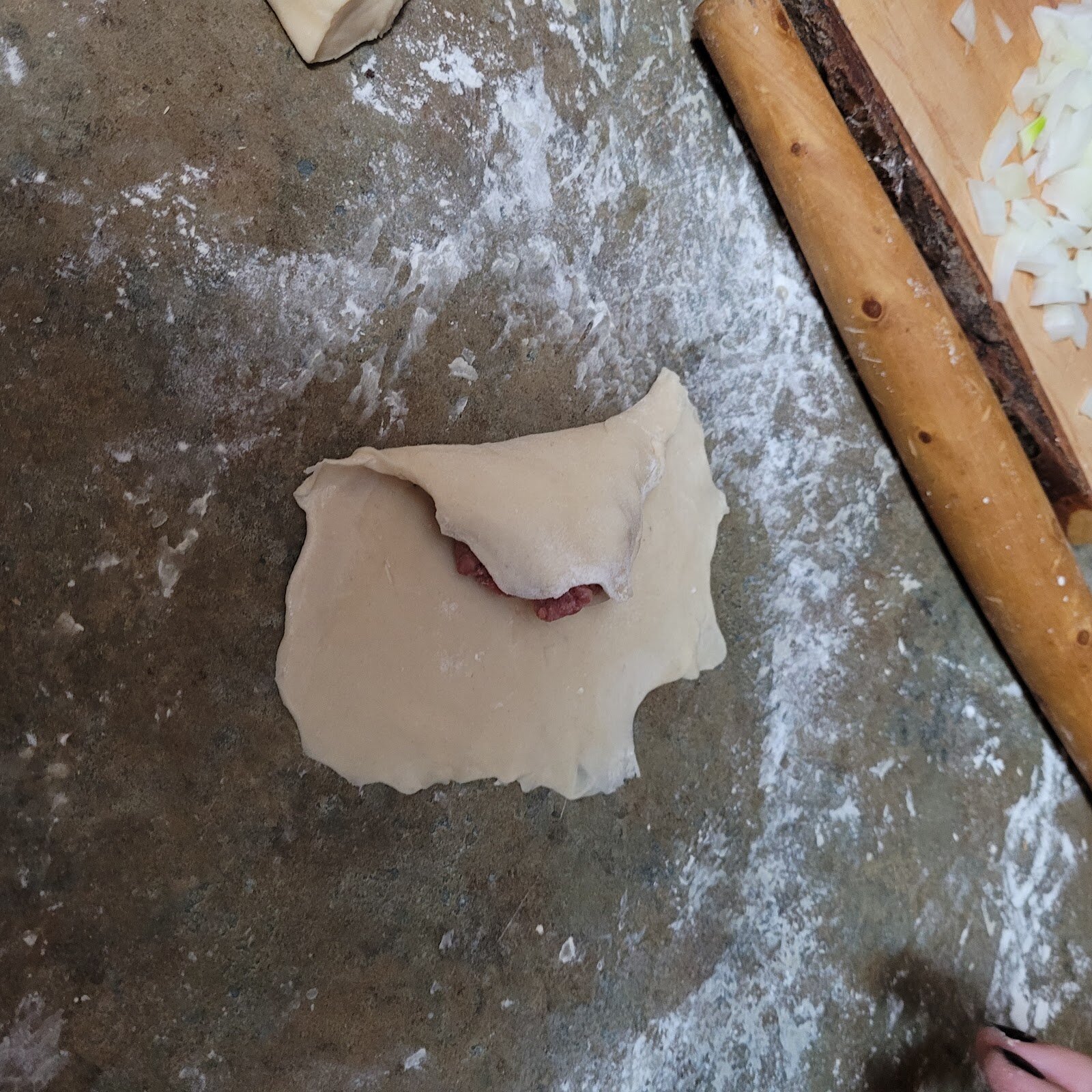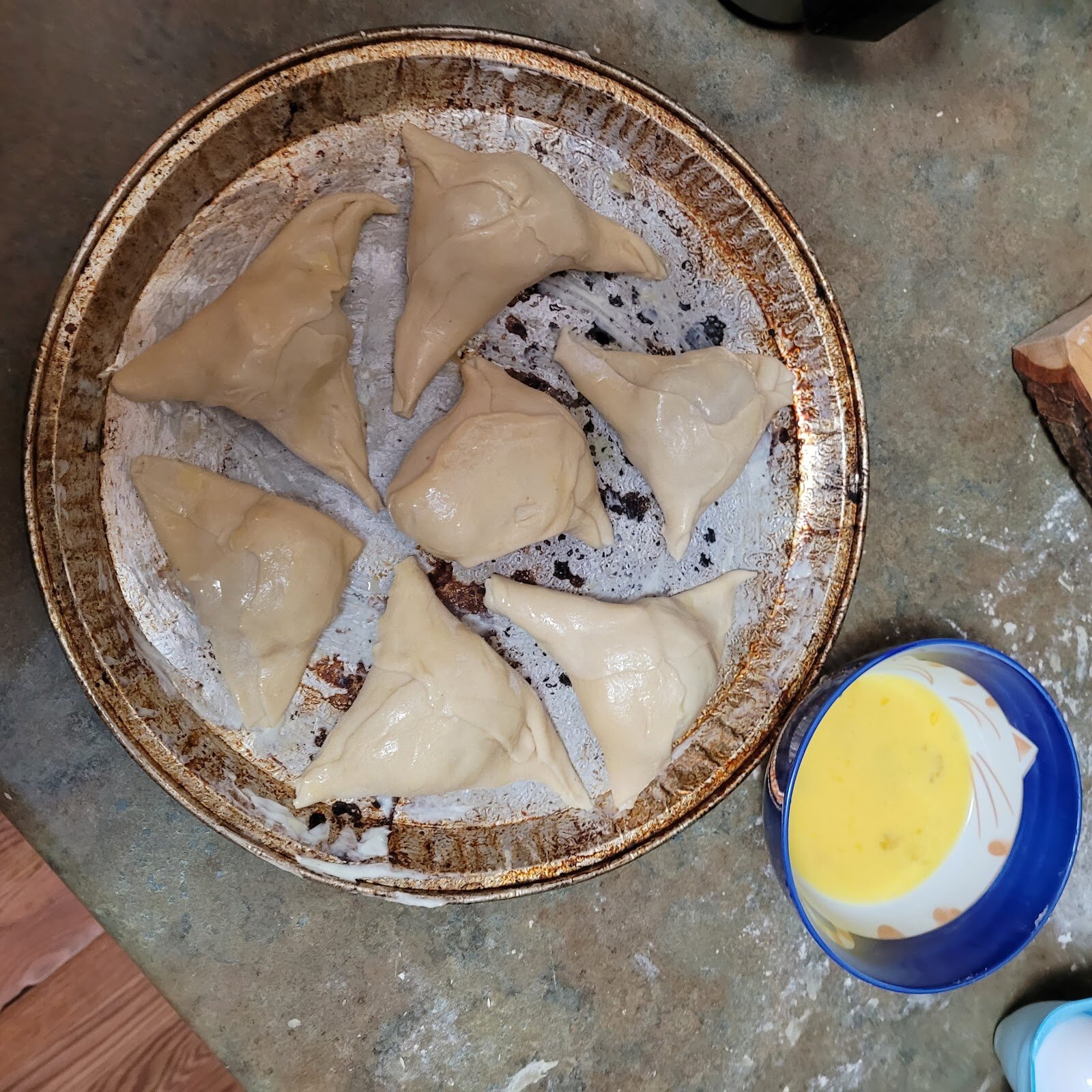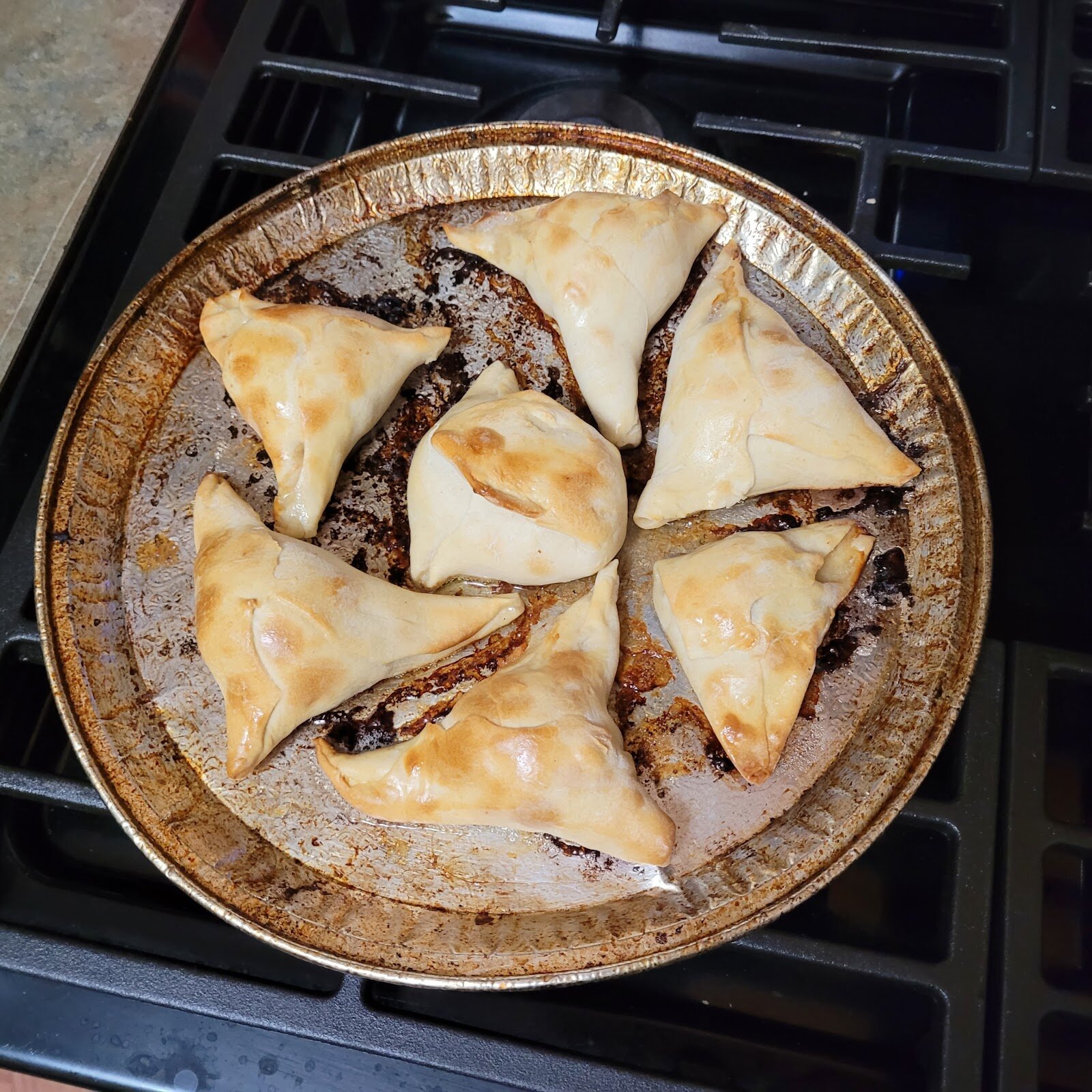Baking Samsas, the Go-to Uyghur Street Snack
This week, we decided to have some fun and explore Uyghur culture by making a classic Uyghur recipe, the simple yet too-delectable-for-words meat pie known as the samsa. If you noticed the similarity between “samsa” and “samosa”, it’s no accident. They both come from the Persian root word sanbosag. Unlike samosas, however, samsas are baked and not fried, resulting in a toasty, fresh-baked and grease-free crust around a savory, buttery, melt-in-your-mouth meat filling. Despite hailing from a region underestimated and unexplored by the Western palate, samsas can easily be made in your own home with simple ingredients available at any supermarket. Let’s go!
Ingredients:
3 cups all-purpose flour
2 Grade A large eggs for the dough, and 1 or 2 more eggs to add later.
1/2 tsp salt
1 cup water
A fatty cut of meat or ground meat with extra fat (for our recipe we used ground beef with extra fat)
Olive oil, vegetable oil, or butter
Onions
Salt and black pepper
Instructions (approx. 1 hour work, 1 hour to rest the dough, 15 minutes to bake)
Clear off a good counter space, or get a large cutting board or tray for the dough-making process. Things will get quite messy. We First tried laying down a garbage bag to keep our counter clean, but quickly realized it was gonna be a mess anyway, but if you’ve ever made dough, you know it can be a very fun mess!
Add the 3 cups of flour to a large, sturdy bowl. We used a plastic bowl, but we found that it wasn’t suitable for stirring the dough, and it unfortunately broke in the process! If you can, use a metal or wooden bowl.
Make a little crater in the middle of the pile of flour and put the two eggs into it.
Cool! Now, add the cup of water, and start mixing with a sturdy spoon or spatula. This is the beginning of our dough. It will be very sloppy and sticky at first.
Stir and stir until the dough starts to thicken. Like with any dough, this is the gluten starting to form. Keep at it until you get a nice blob of dough, thick and elastic enough that you can pick the whole thing up with the spatula or spoon. Time to knead!
If you want to put some music on, now is the time. You won’t have clean hands for quite a while! Look for a “Muqam”, a traditional song for dancing, to really get the Uyghur vibes going. Dust up your dough making station with some more flour, so the dough doesn’t stick to the surface. Drizzle some olive oil on your hands and so the dough doesn’t stick to them. Now you will knead. Start with the “turn and slap” method, a good way to build up the gluten while it’s still gooey. Pick up your dough blob by the edge and slap it down on the counter or board like you’d slap the dirt out of a rug. Then grab the edge further away from you, and flip it with the same vigorous slap. As you do this, the dough might pick up some of the flour, and if that happens you can sprinkle a little more. If the dough picks up too much of the flour and starts sticking badly, return it to the bowl and keep mixing until it’s really ready. Try to avoid adding flour as much as you can, otherwise you’ll end up with a very stiff crust that’s not good at all. Have faith in your dough!
There will be a lot of slapping, you will end up with a bouncy, elastic ball of dough that you can work with your hands. Now you can knead like in the movies, eh? Use the bottom of your palm and roll that ball of dough around until it’s smooth and has lost all of its former slimy, gooey nature. Now your dough is all grown up and ready to take on the oven. This was our first experience making a dough, and it was quite a tough lesson in how long and painstaking the process is. My advice: don’t get too stressed out! Take the time to enjoy the childlike fun of playing with something messy, and appreciate the magic as your dough takes shape.
Finally, you will have a smooth ball of dough that can be tossed between your hands with ease. Take this beautiful creation and place it into a clean bowl. Cover the dough with a damp towel so that it won’t dry out and let it rest at room temperature for 1 hour. During this time, you can make the filling.
Compared to the dough, the filling is quite easy. First, dice your onion. If you have a whole cut of fatty meat, chop it up into small bits the same size as the pieces of onion. If you used ground meat like we did, get an amount approximately twice as large as the amount of onion. The rules for a good filling are quite lenient. Garlic, coriander and cumin seeds can be added if you have them. Add some olive oil or butter, and salt and pepper to taste. Mix it all up and now you have your filling.
Once your dough is rested, roll it up into a snake and cut equal segments of it for each samsa.
Take each segment and roll it out into as much of a circle as you can. Roll the edges out such that they are thinner than the center.
Looking good. Now, place a bit of filling about the size of a walnut into the center.
Fold the dough around the filling. You can fold them either into squares, like a burrito, or into triangles like you would for samosas. We opted for triangles, because they can be held with one hand and bit into easily. Up to you!
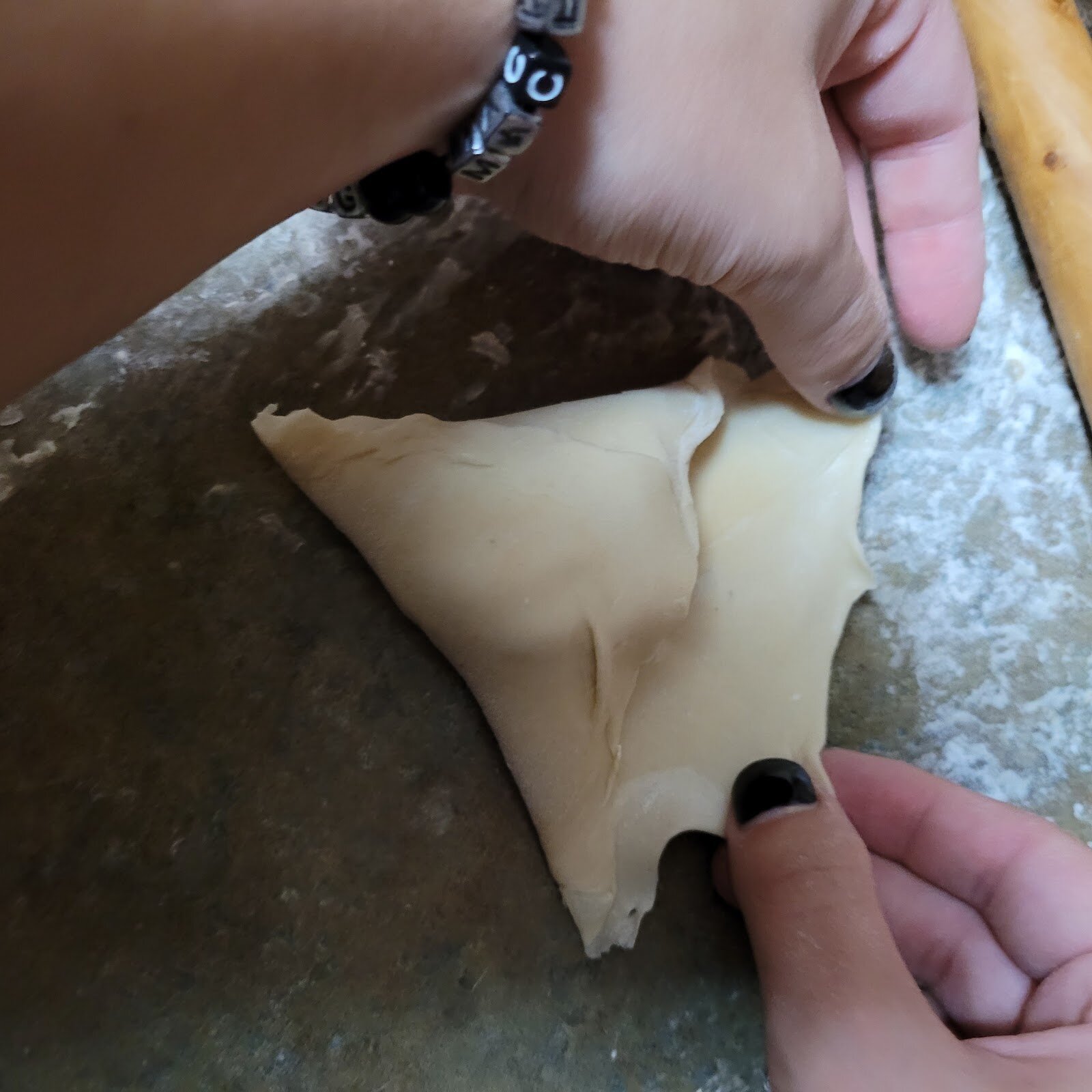
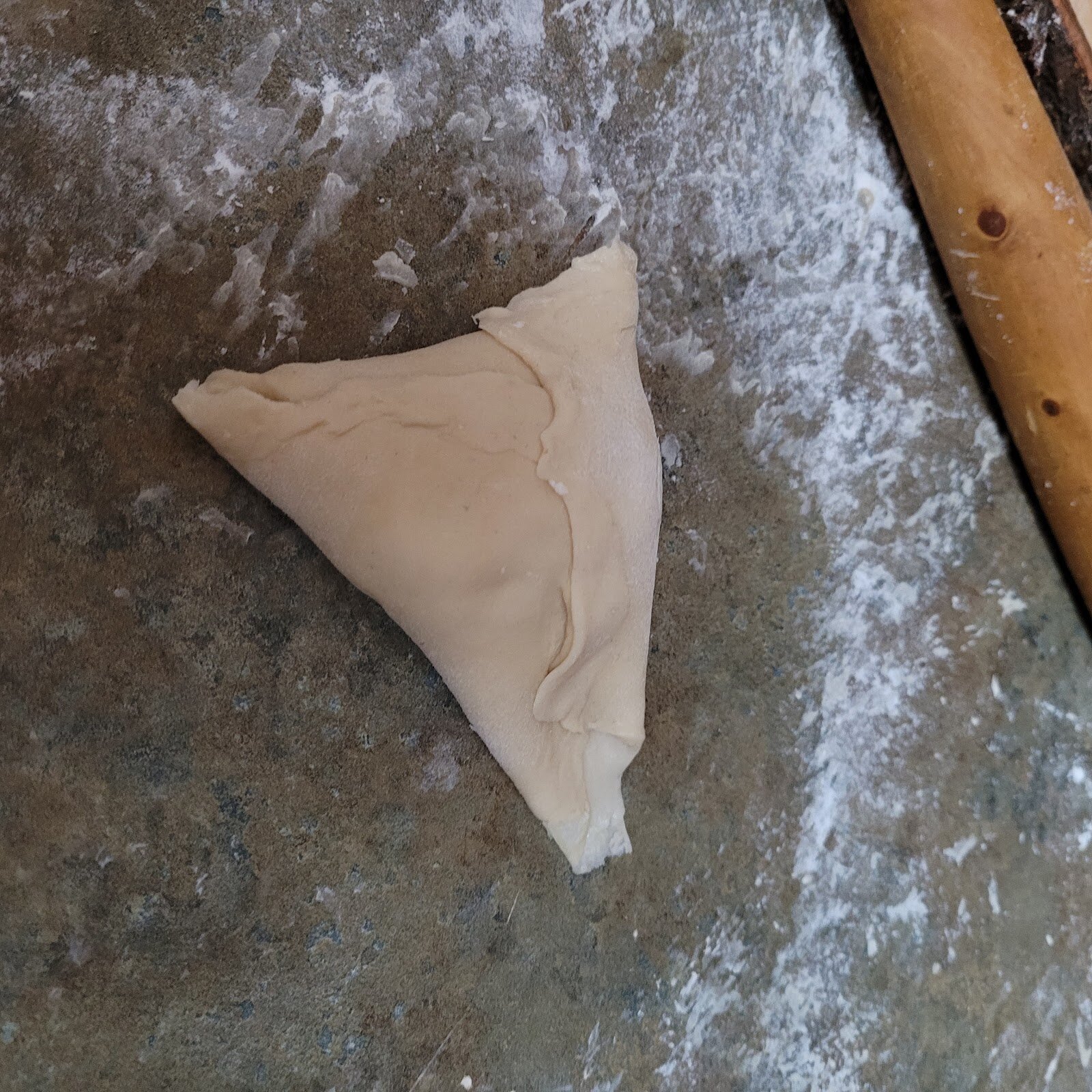
Preheat your oven to 430℉. Grease a baking tray and lay out the samosas. They will not expand much, so they can be placed fairly close together and not risk sticking to each other. Brush the samsas with some beaten egg. Put them on the middle tray of the oven, and bake for about 15 minutes, more or less, until they are golden brown on the top. Now they are done! Congratulations!


